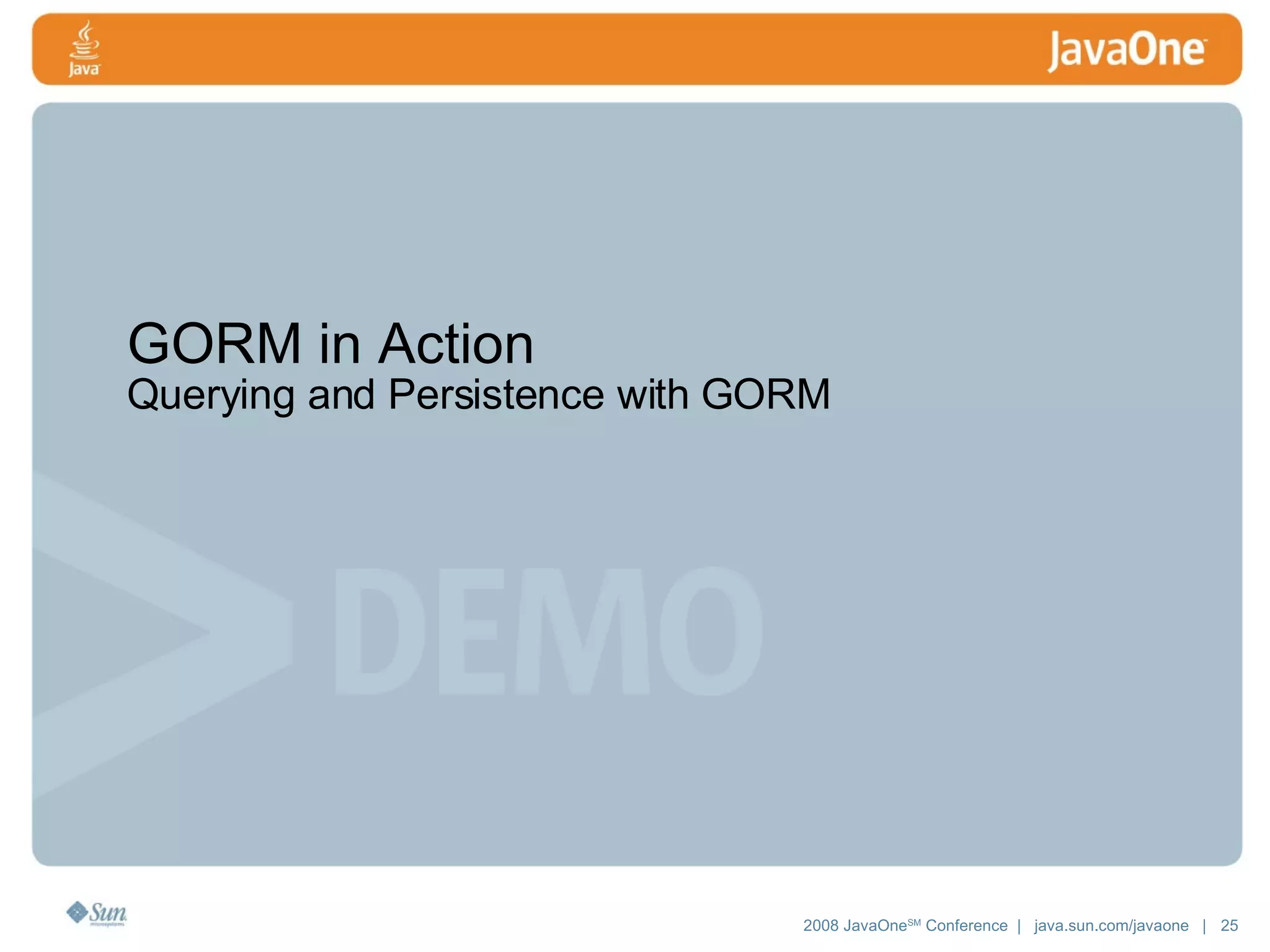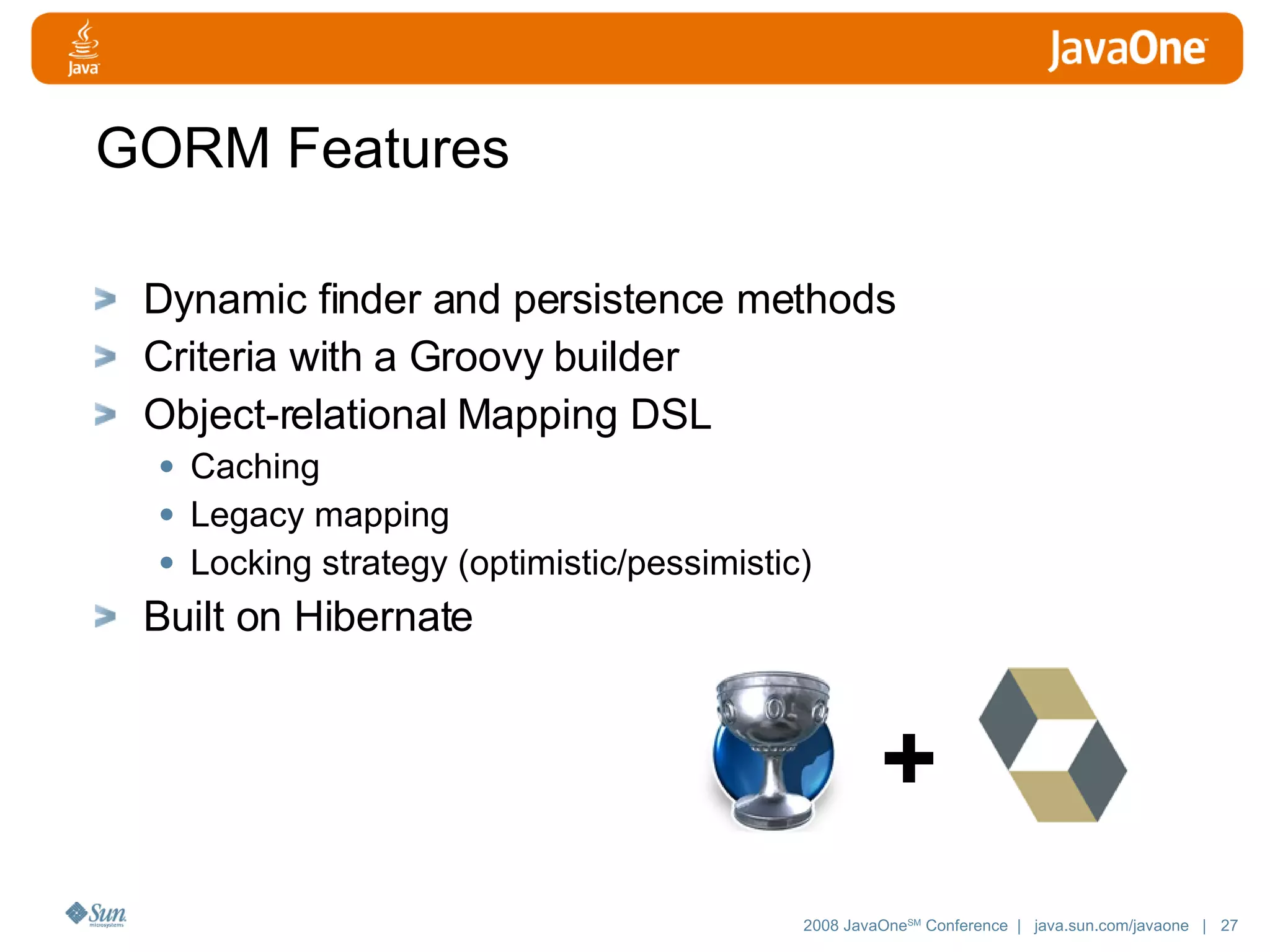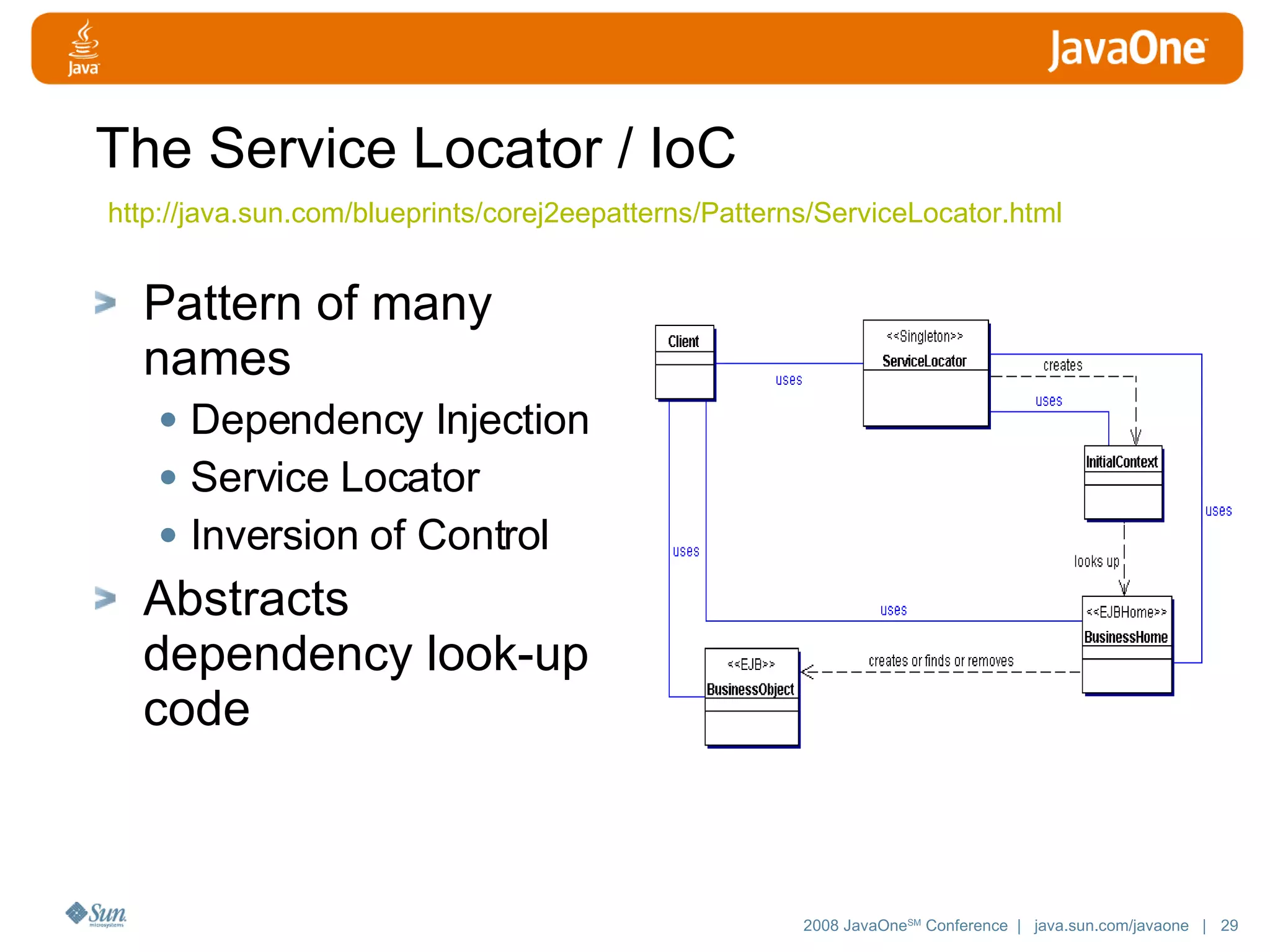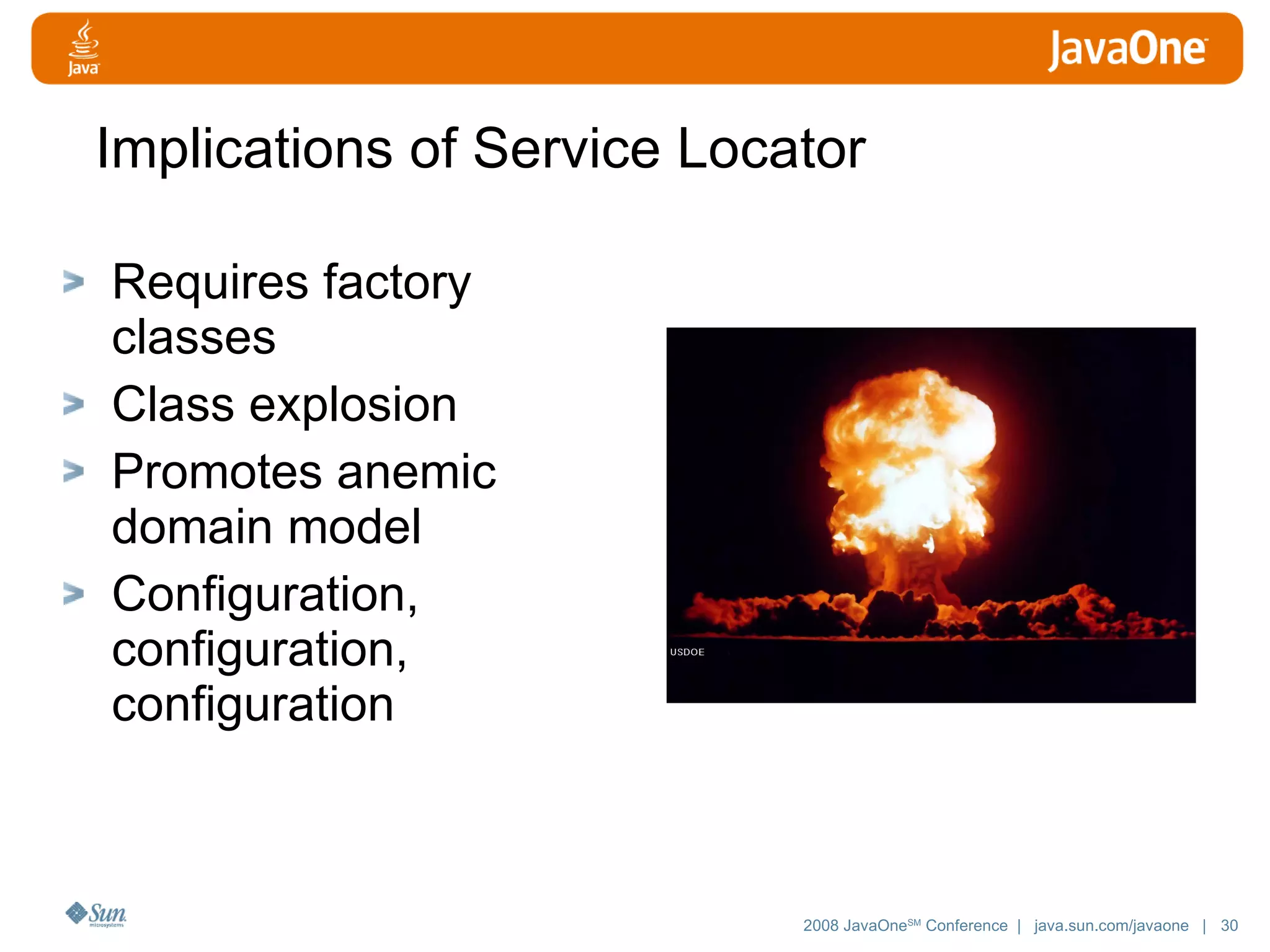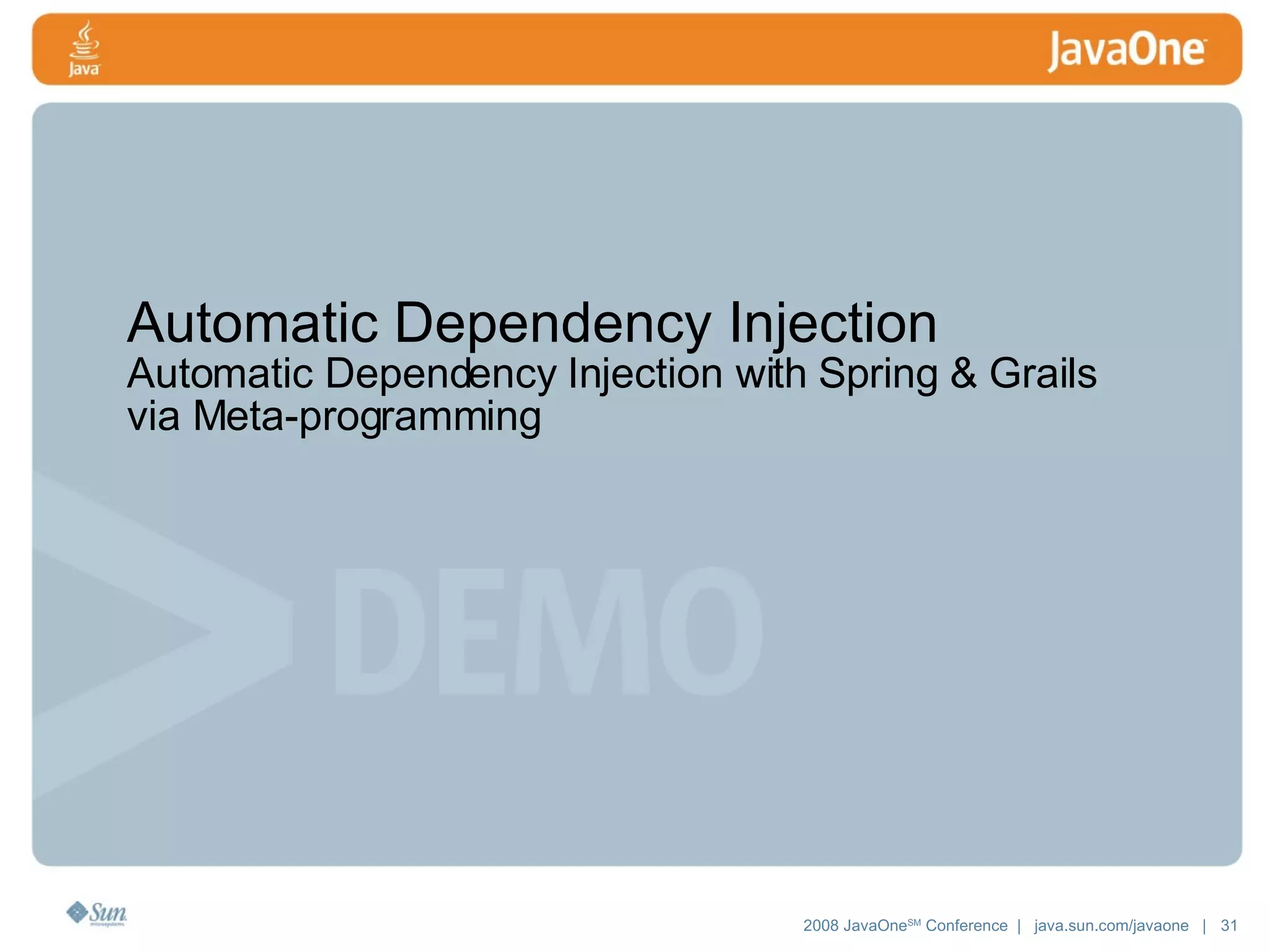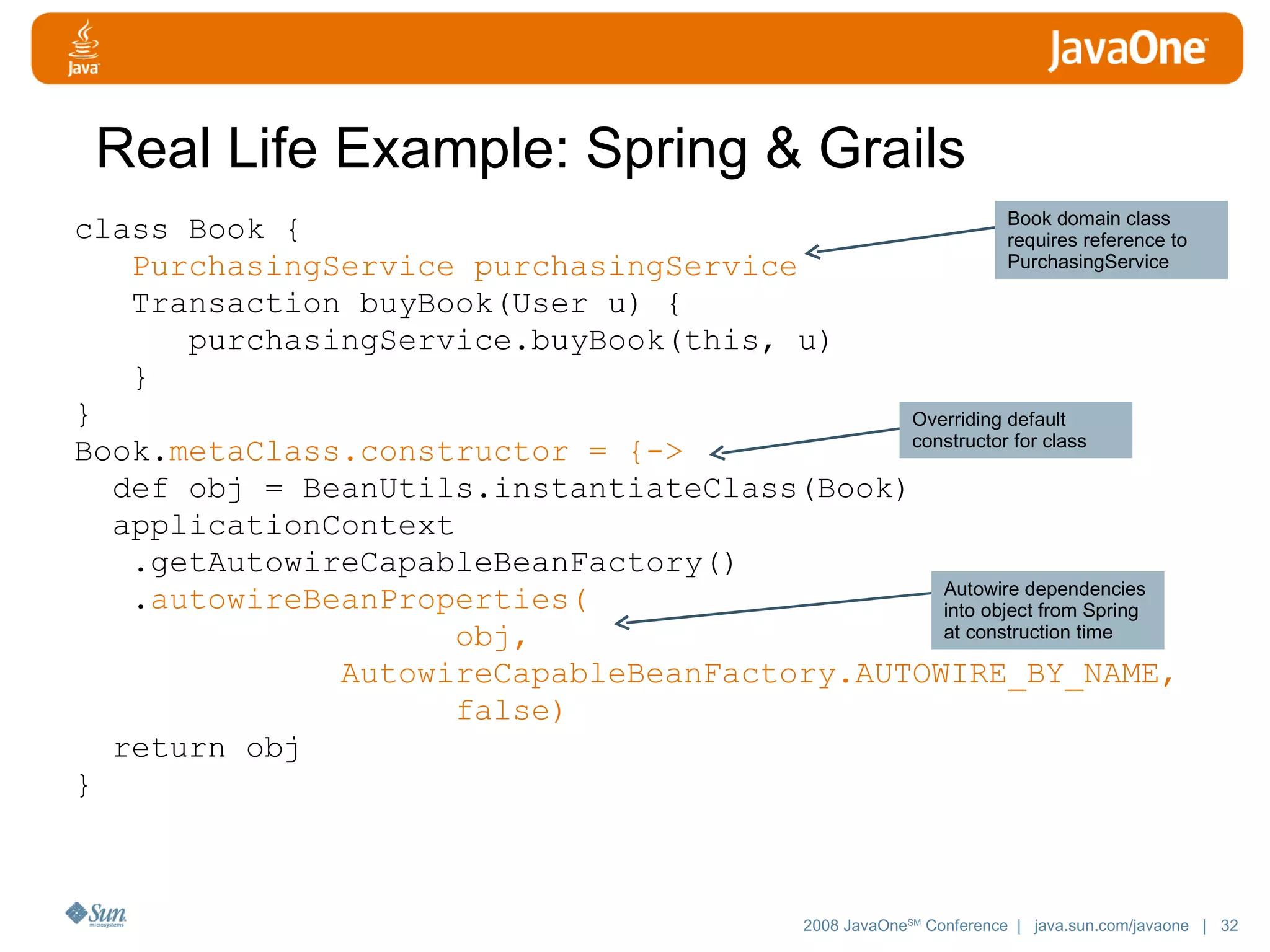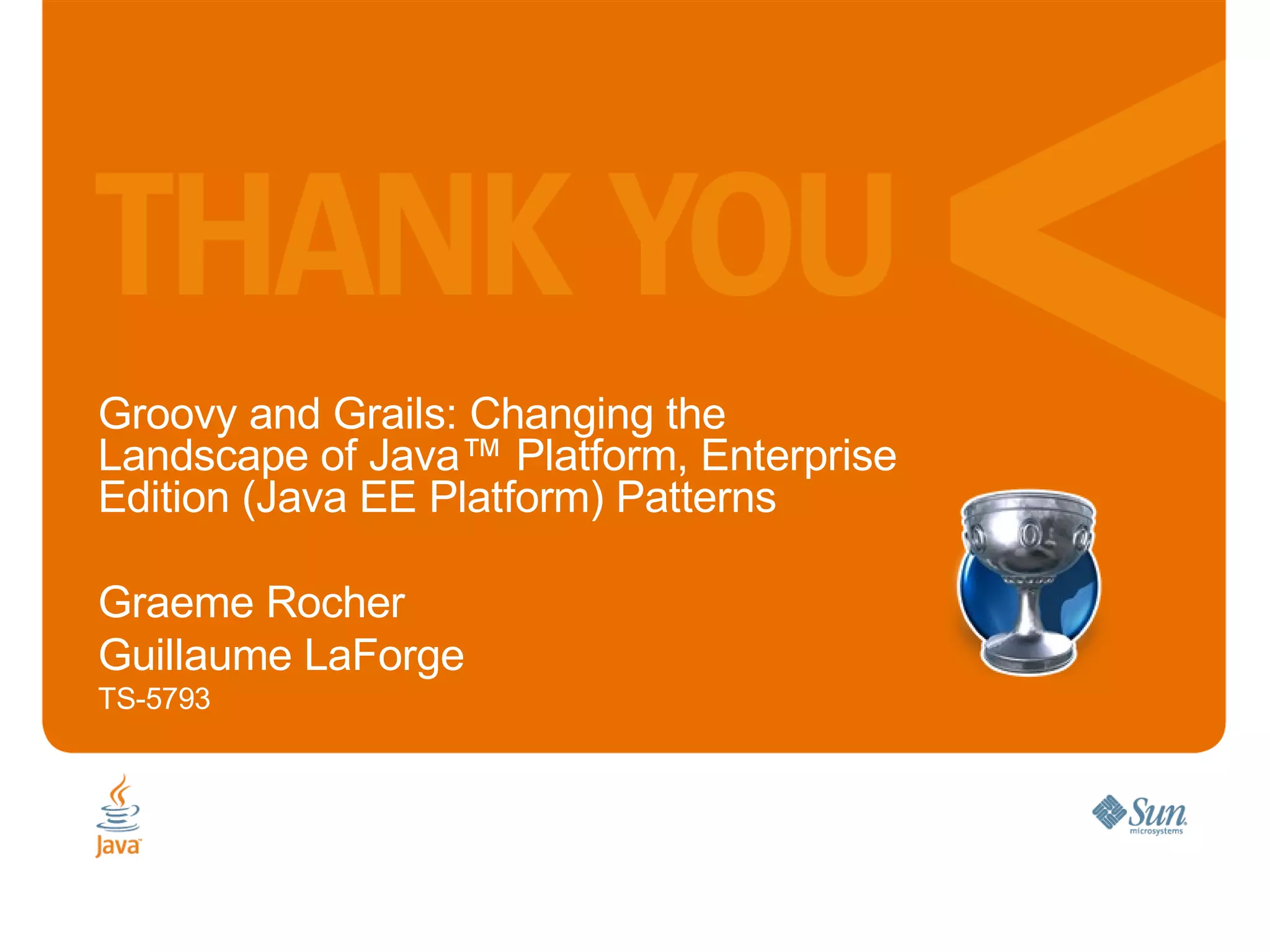Groovy is a dynamic language for the Java Virtual Machine that integrates with Java. Grails is a web framework built on Groovy that leverages existing Java technologies. The presentation discusses how Groovy's meta-programming capabilities, through its Meta Object Protocol, enable new patterns like dynamic finders that change how we approach common Java patterns like the Data Access Object and Service Locator.
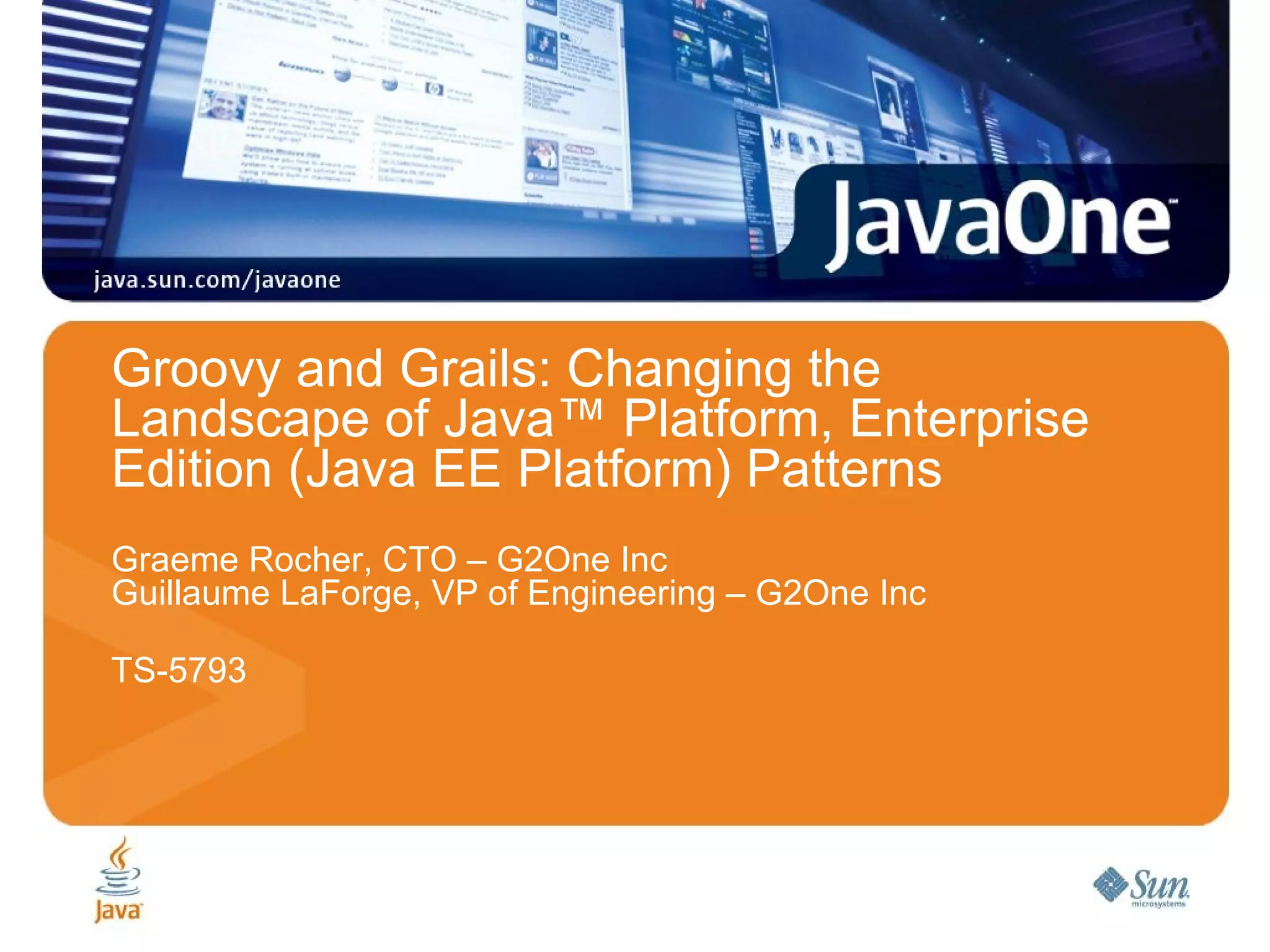
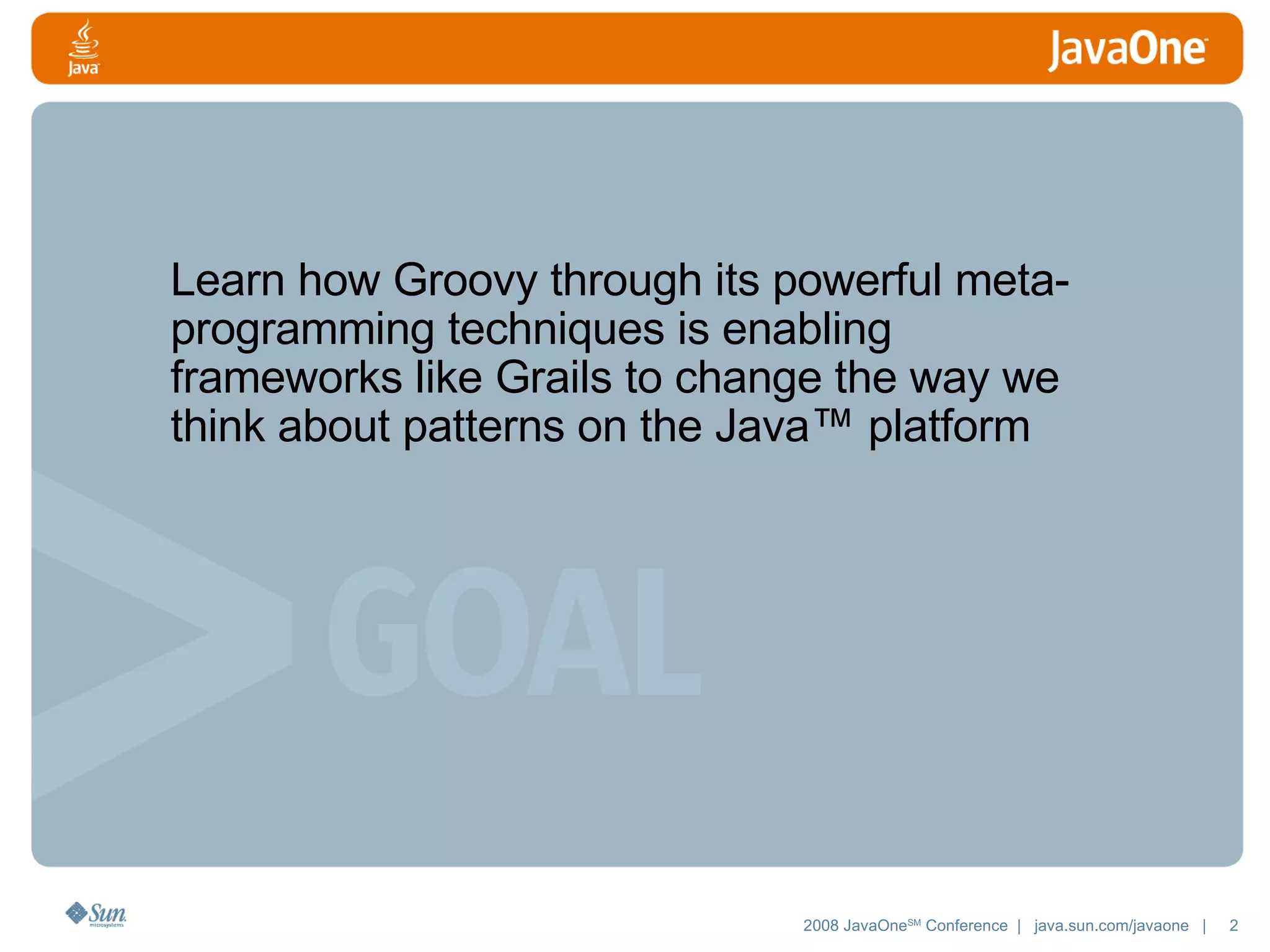

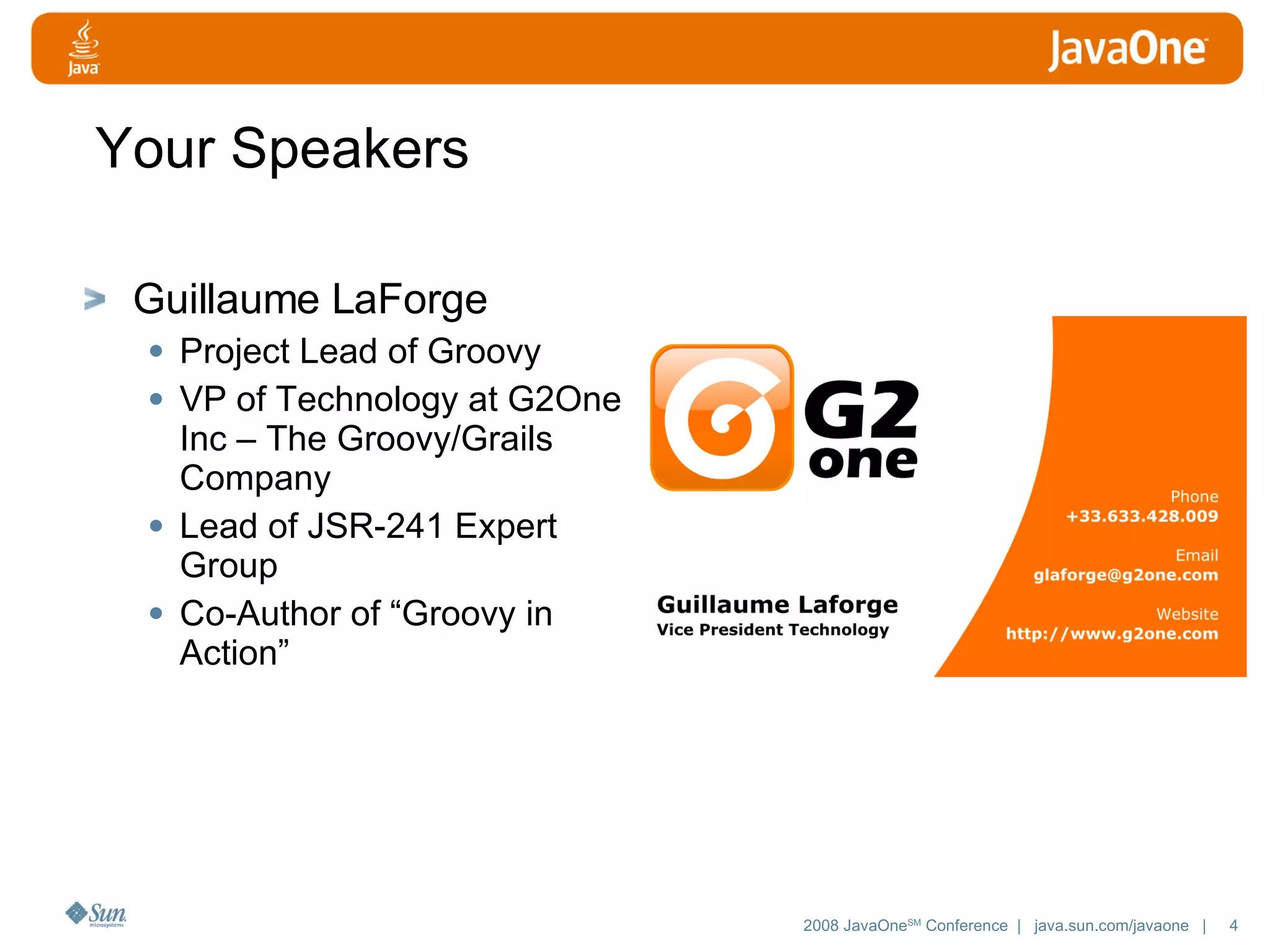


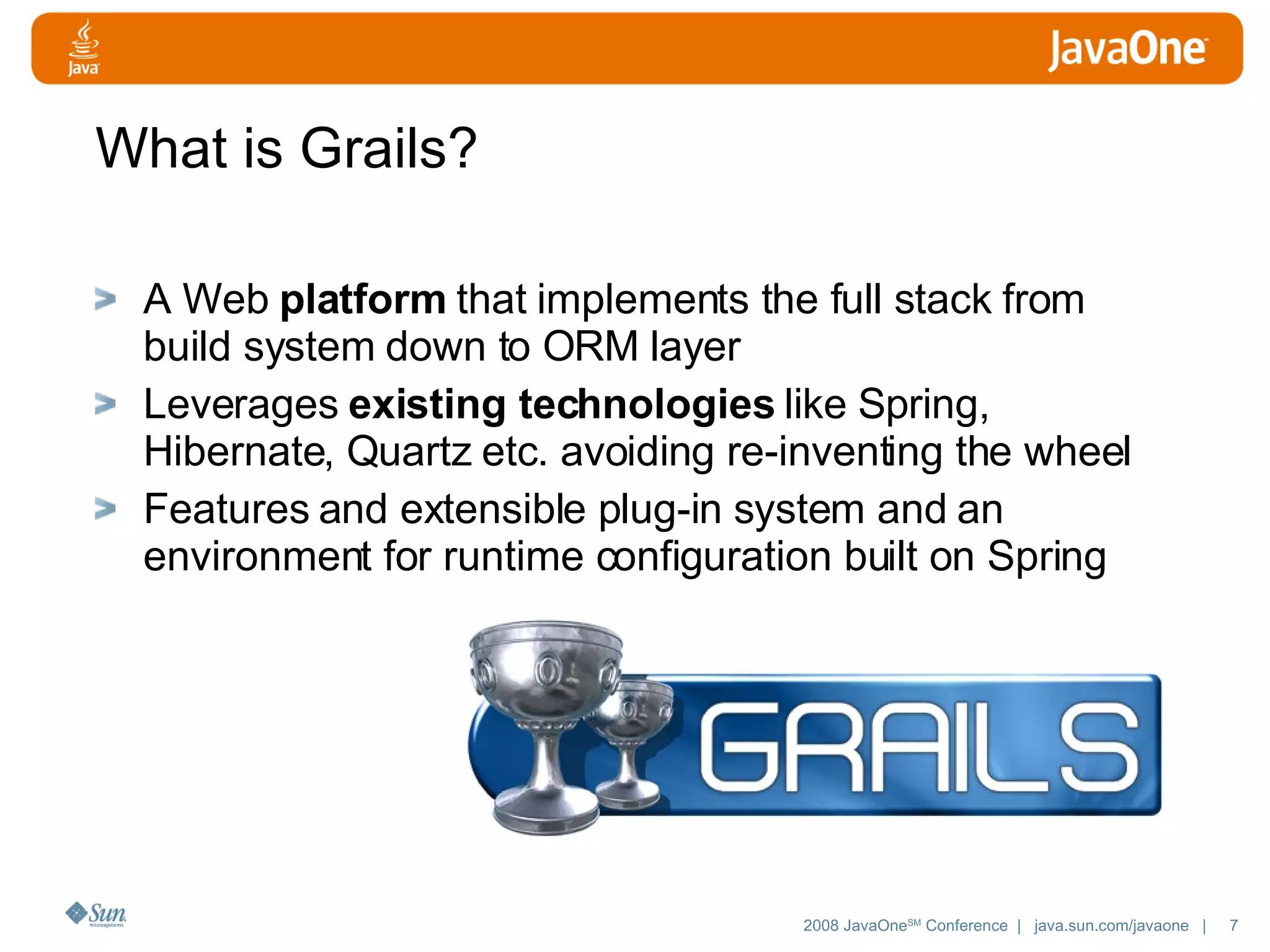
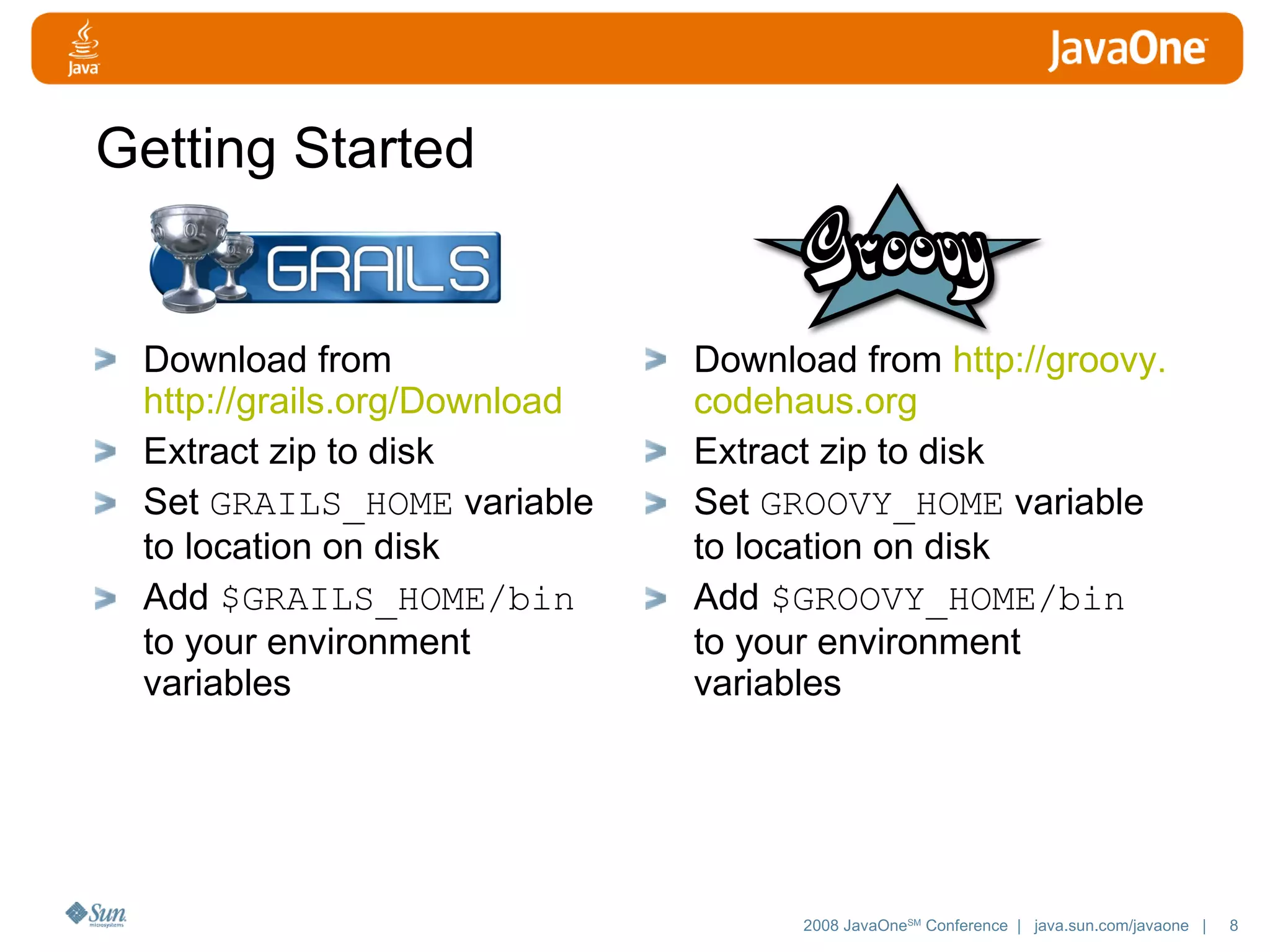
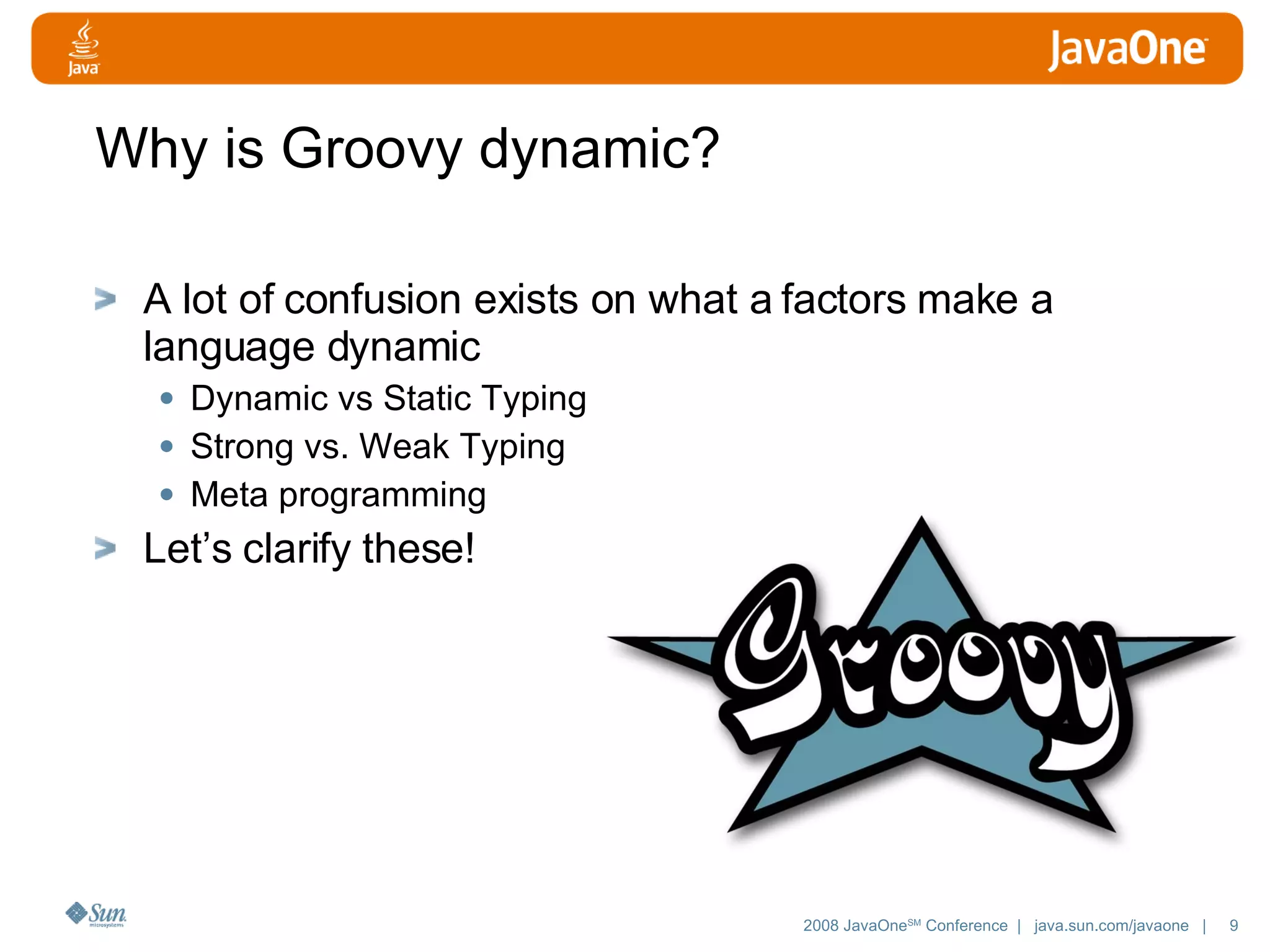
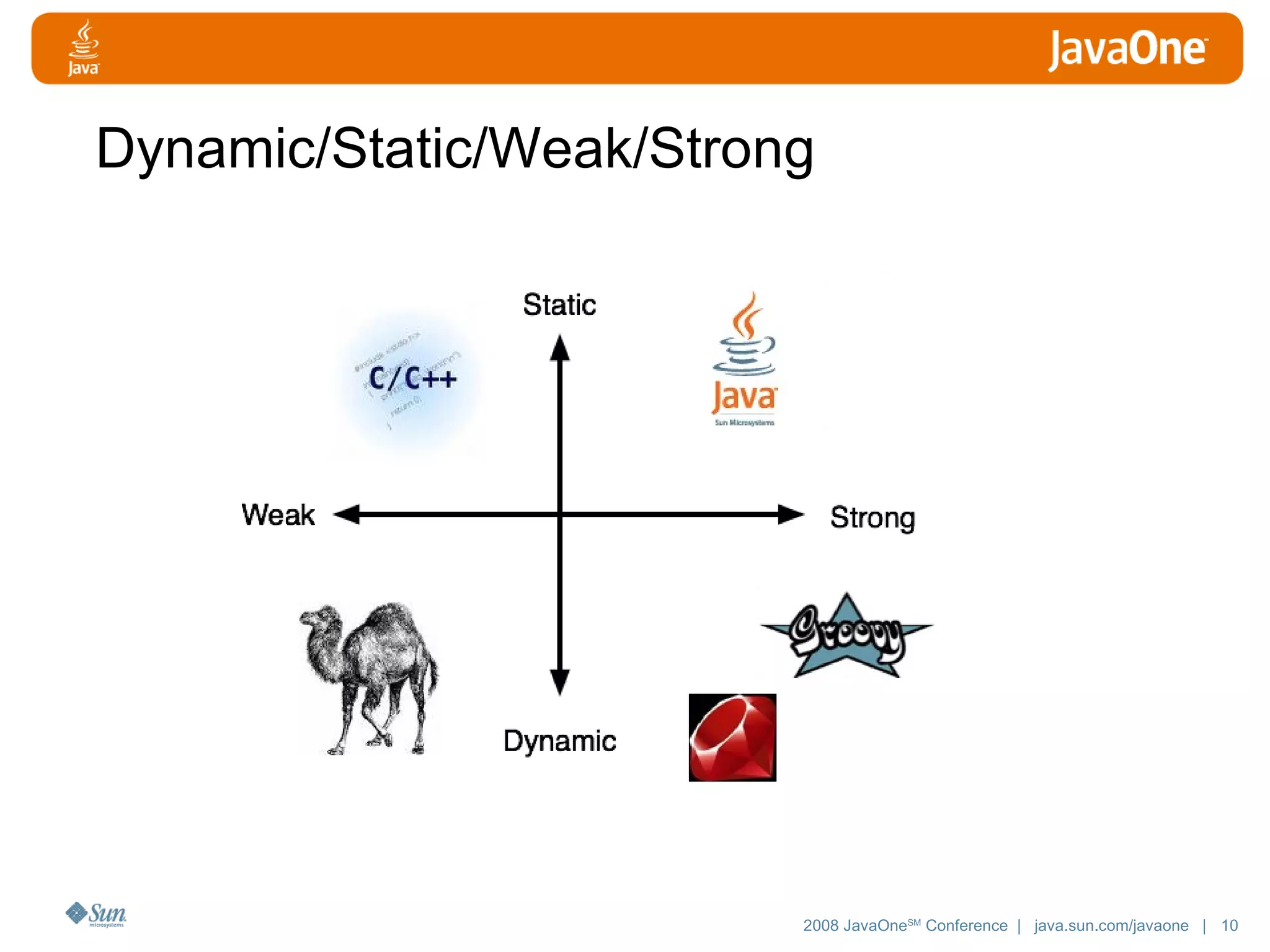
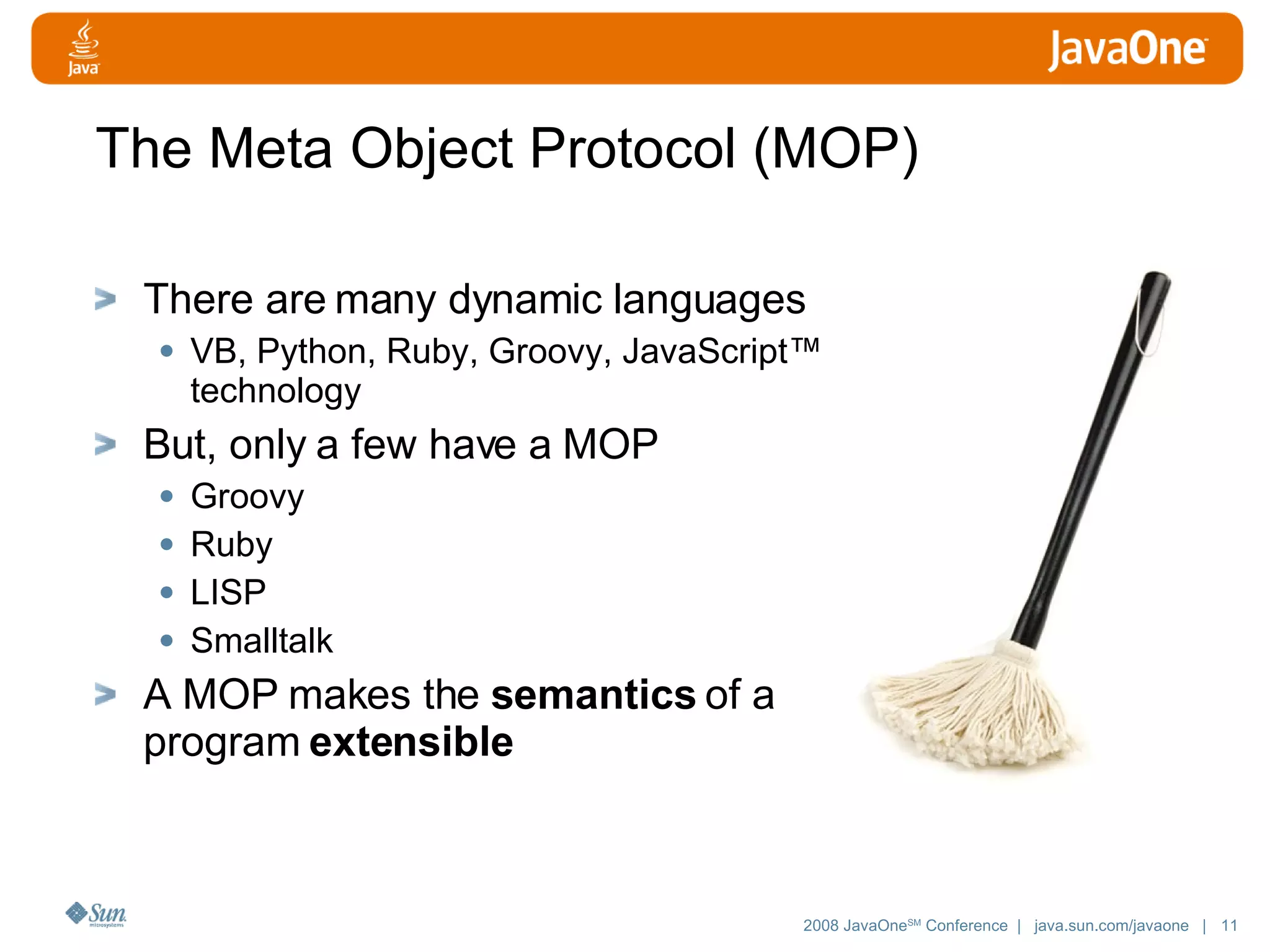
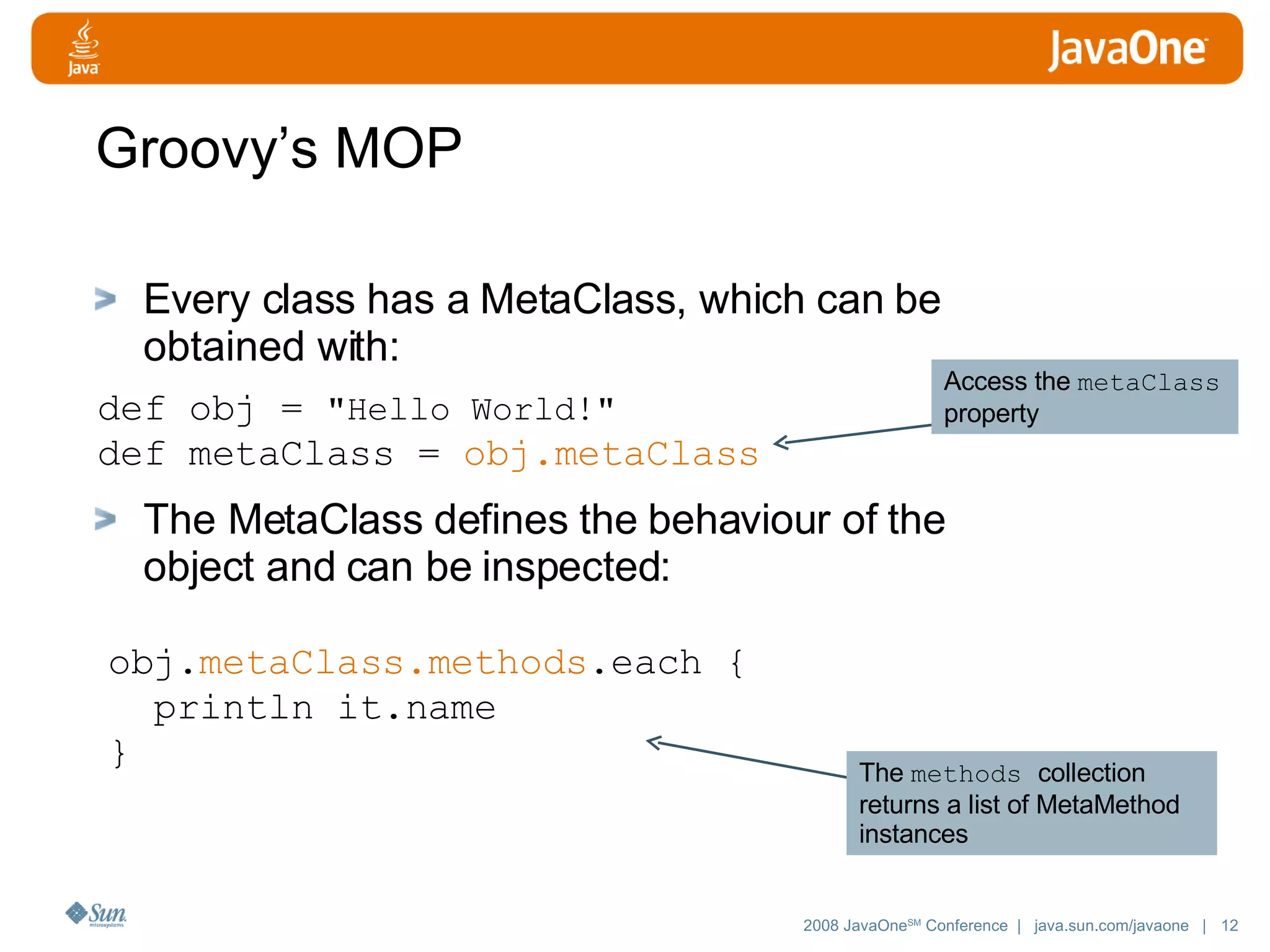
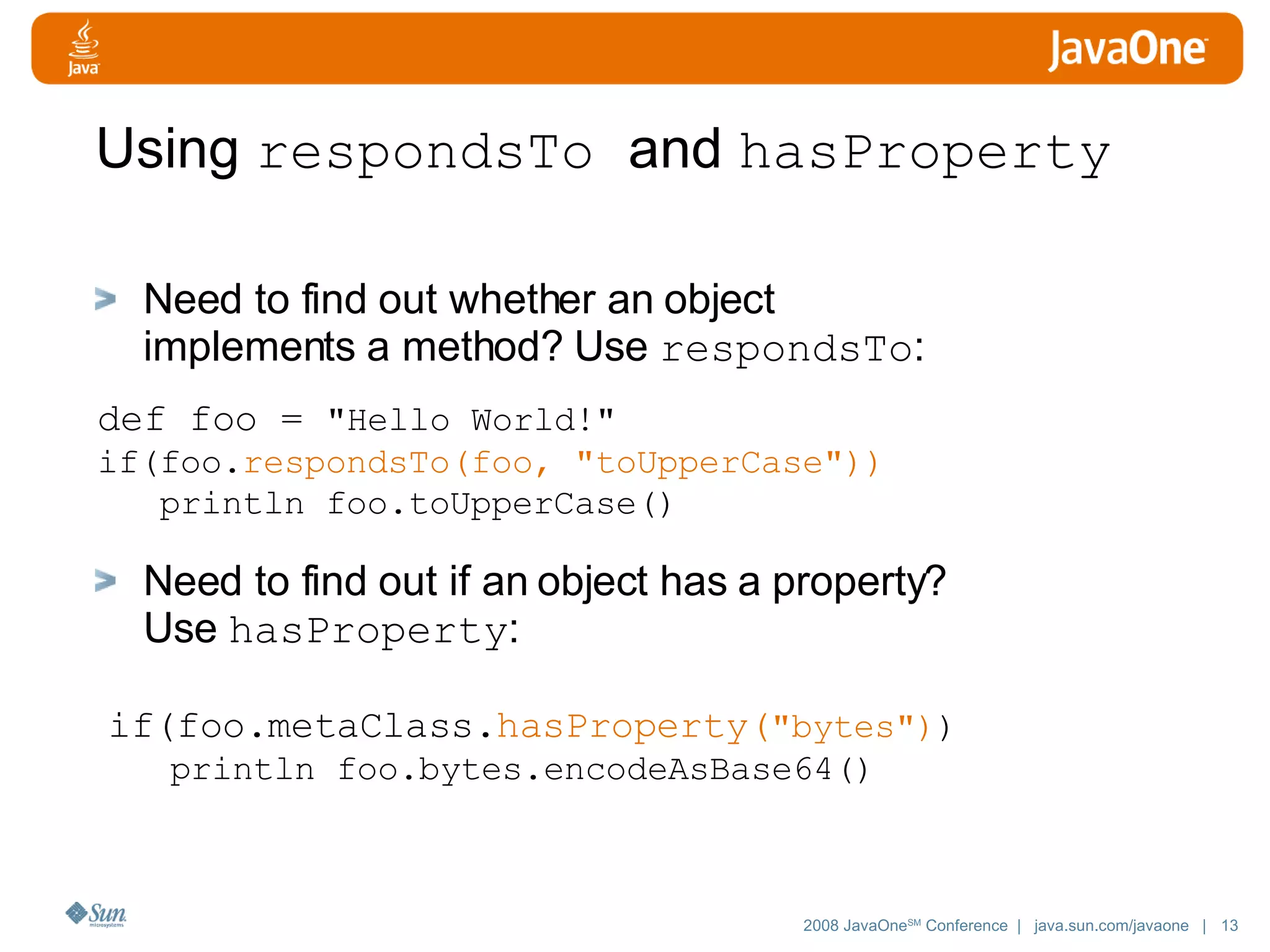
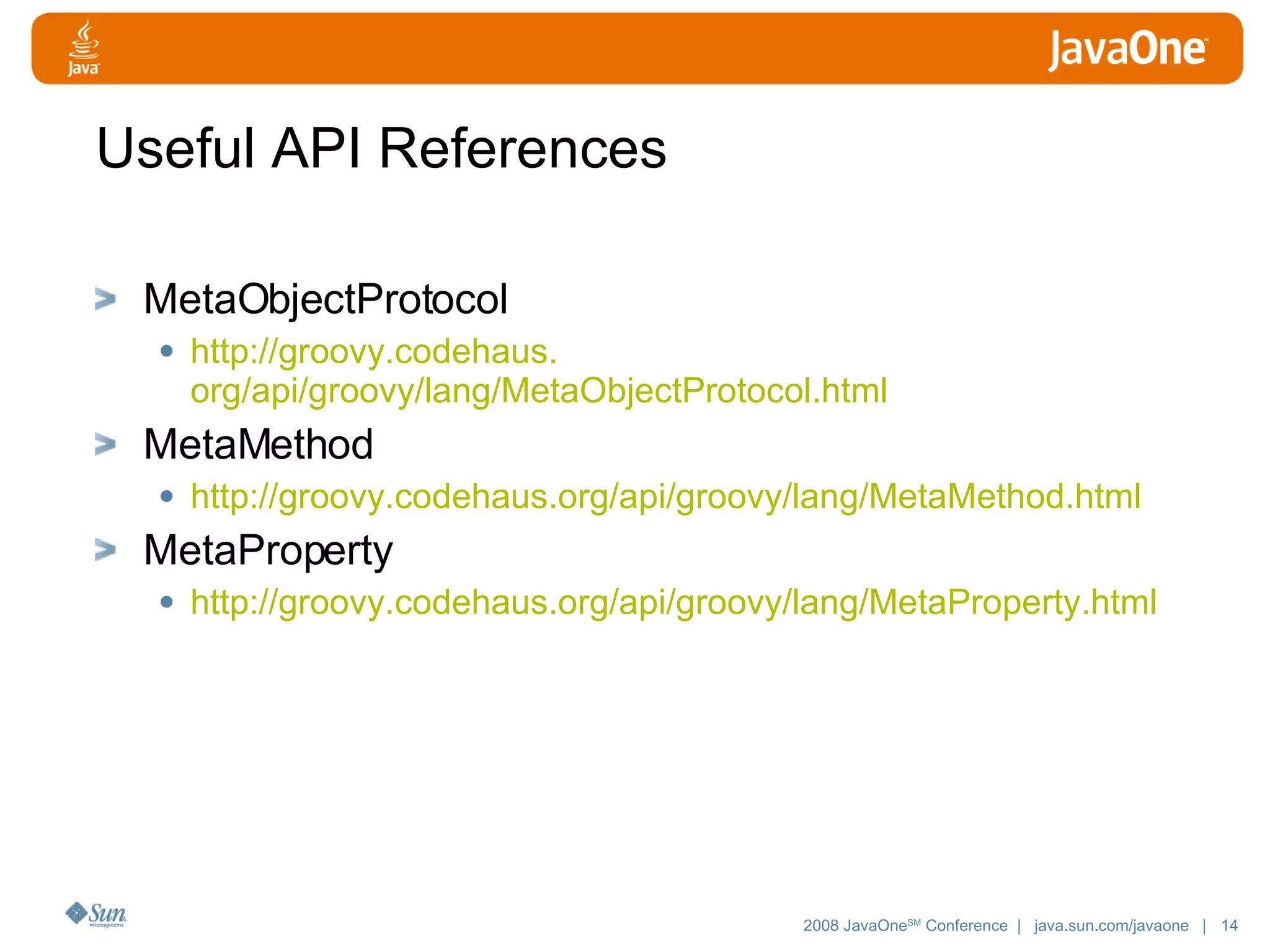
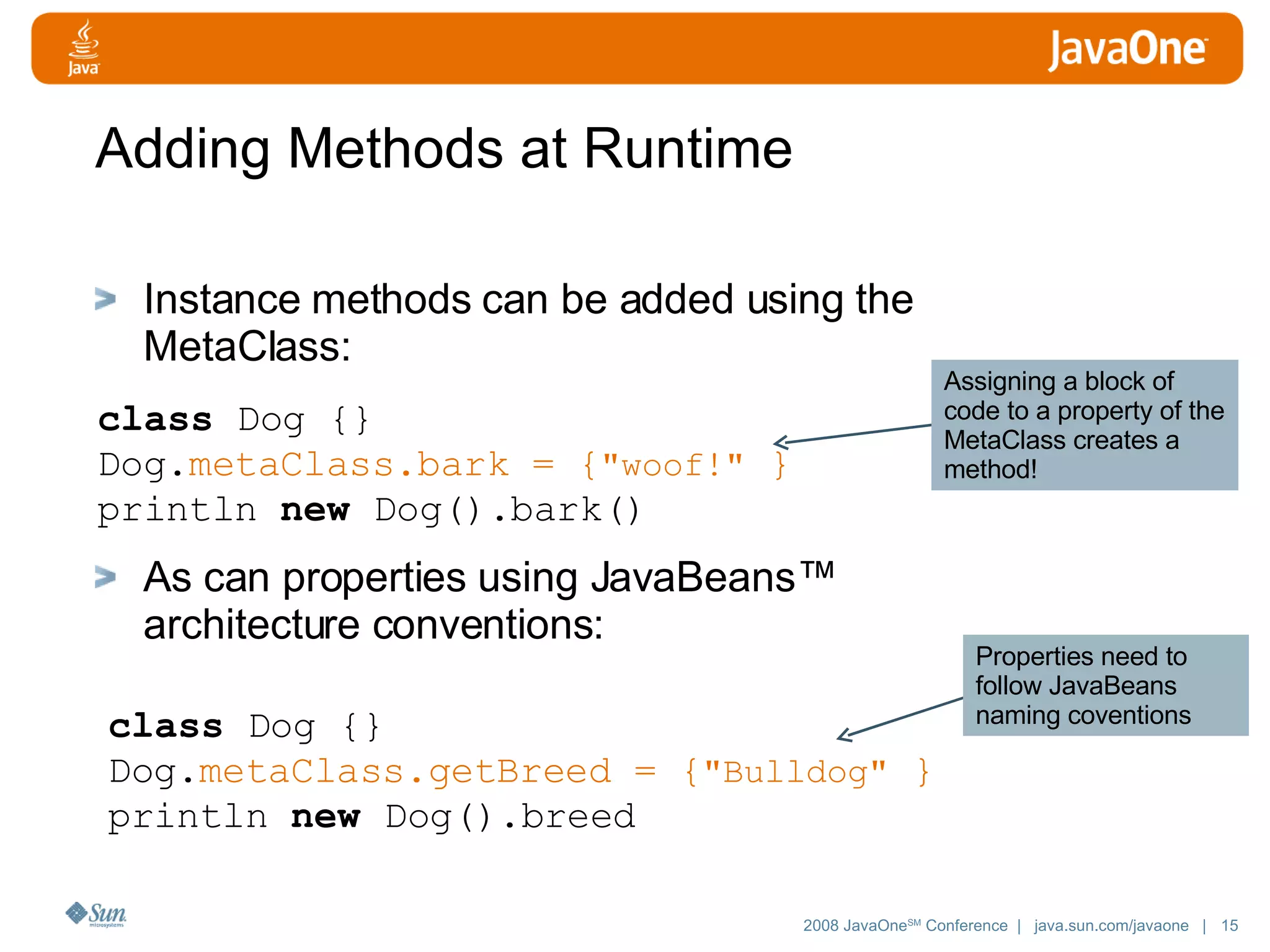
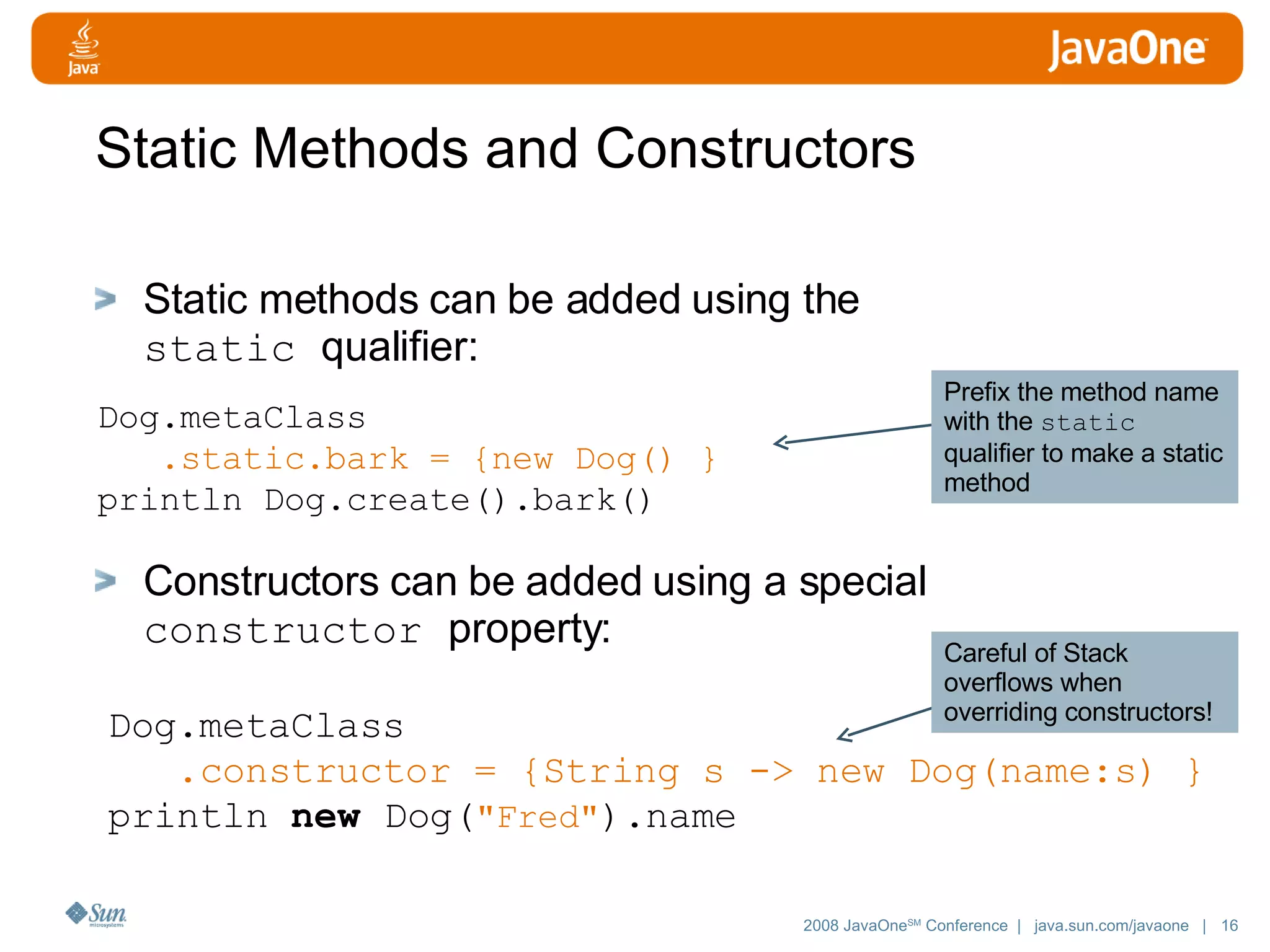
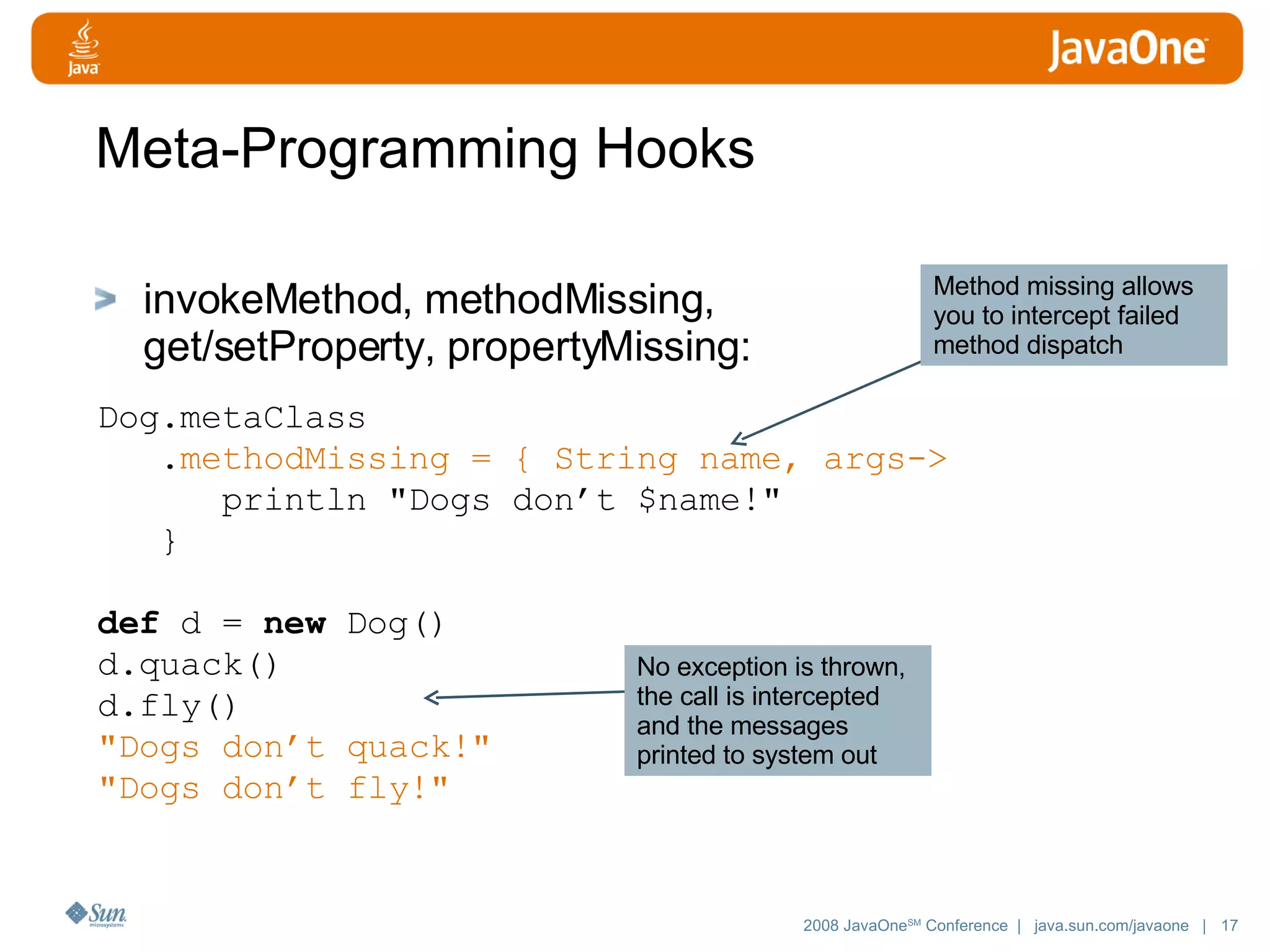
![Meta-Programming Patterns Intercept , Cache , Invoke Enables code synthesis Basic Usage: Intercept method Dynamically create new method Cache new method Invoke new method First call takes performance hit, next call faster Dog.metaClass . methodMissing = {String name, args-> def cached = {Object[] a -> println ”Dogs don’t $name!" } Dog.metaClass . "$name" = cached cached. call(args) } Intercept – implement methodMissing Cache – Dynamically register new method Invoke – call new behaviour](https://image.slidesharecdn.com/psts57932957931911finv1-1210965156347074-8/75/JavaOne-2008-TS-5793-Groovy-and-Grails-changing-the-landscape-of-Java-EE-patterns-18-2048.jpg)
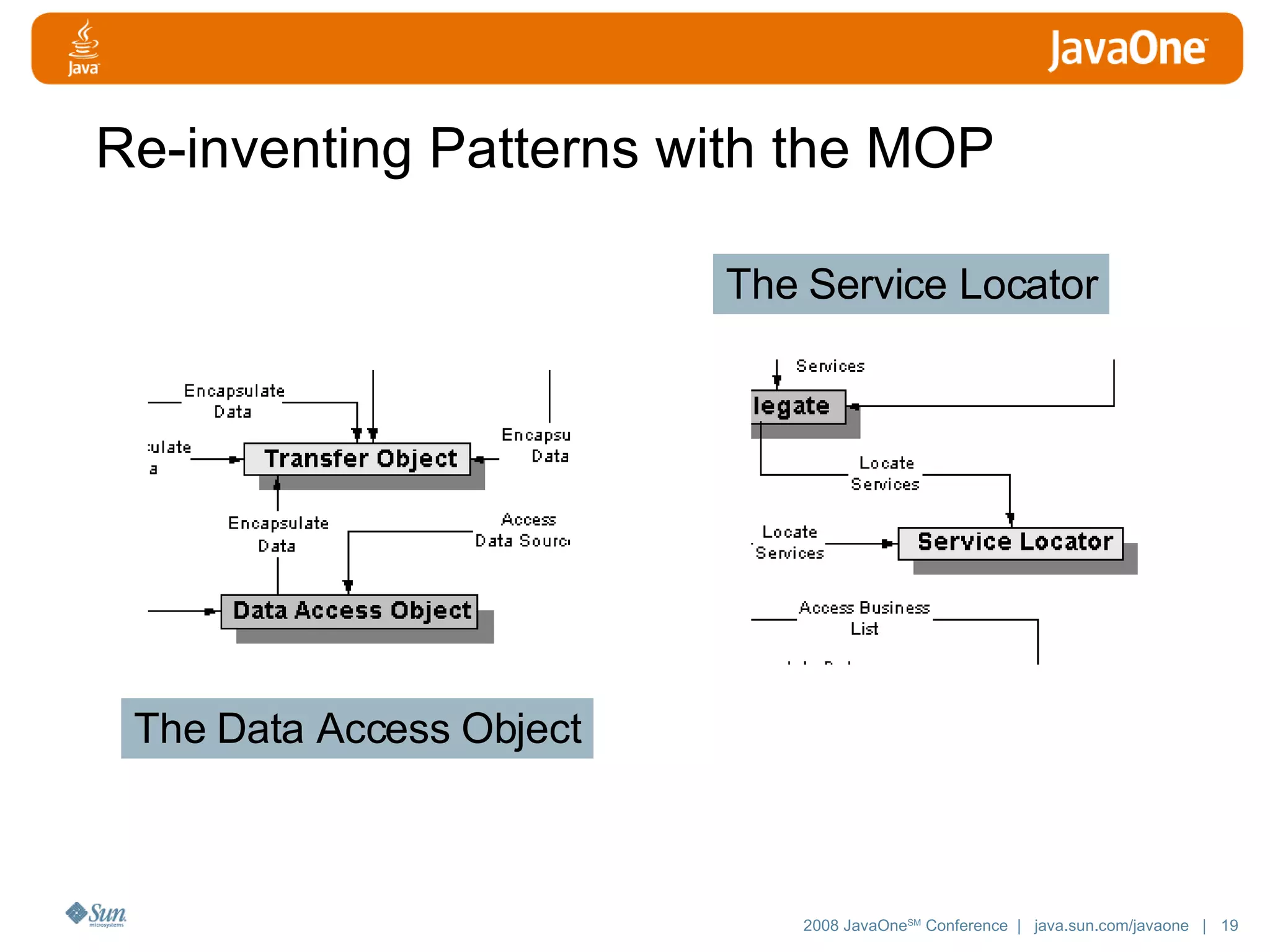
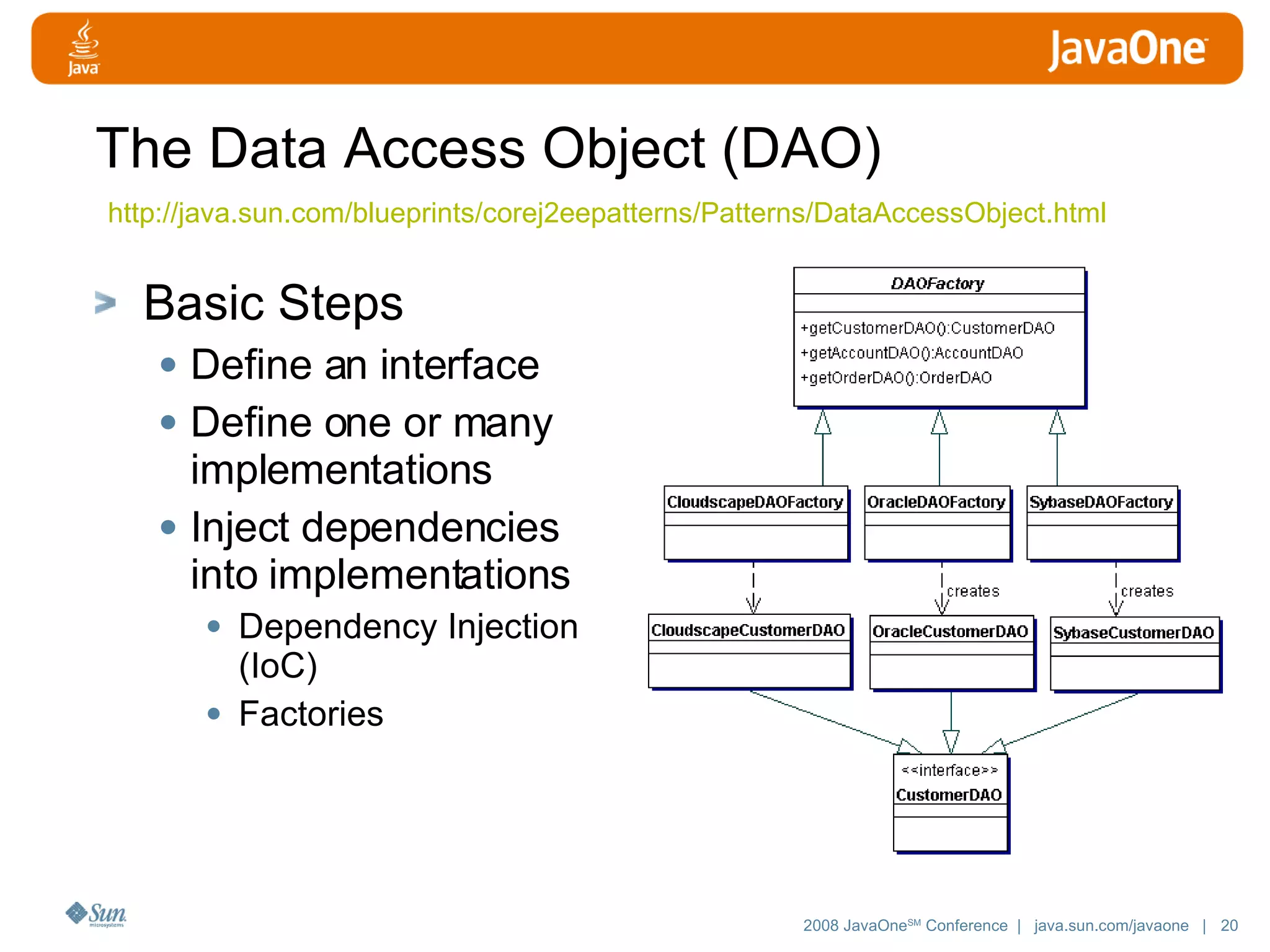
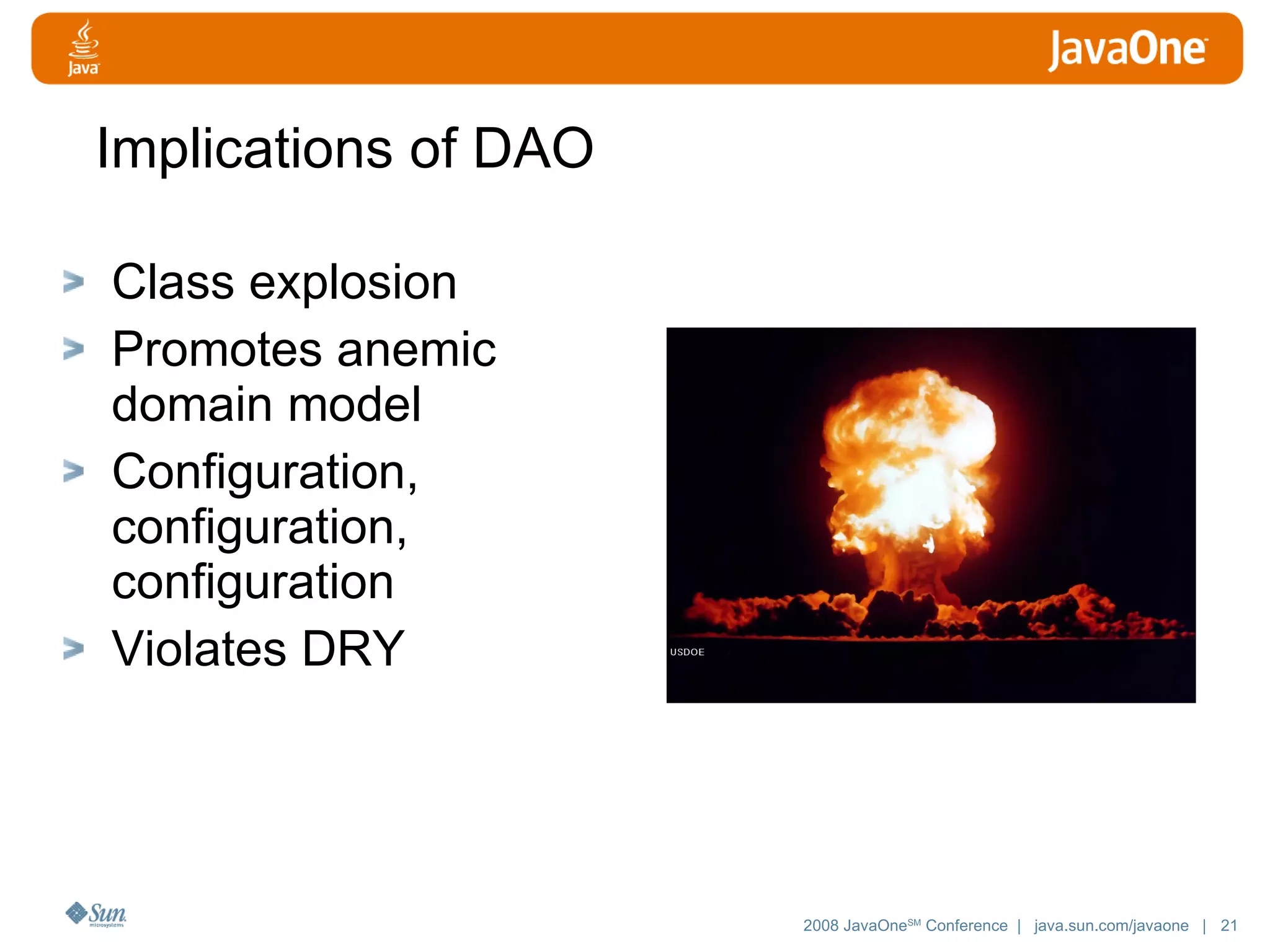
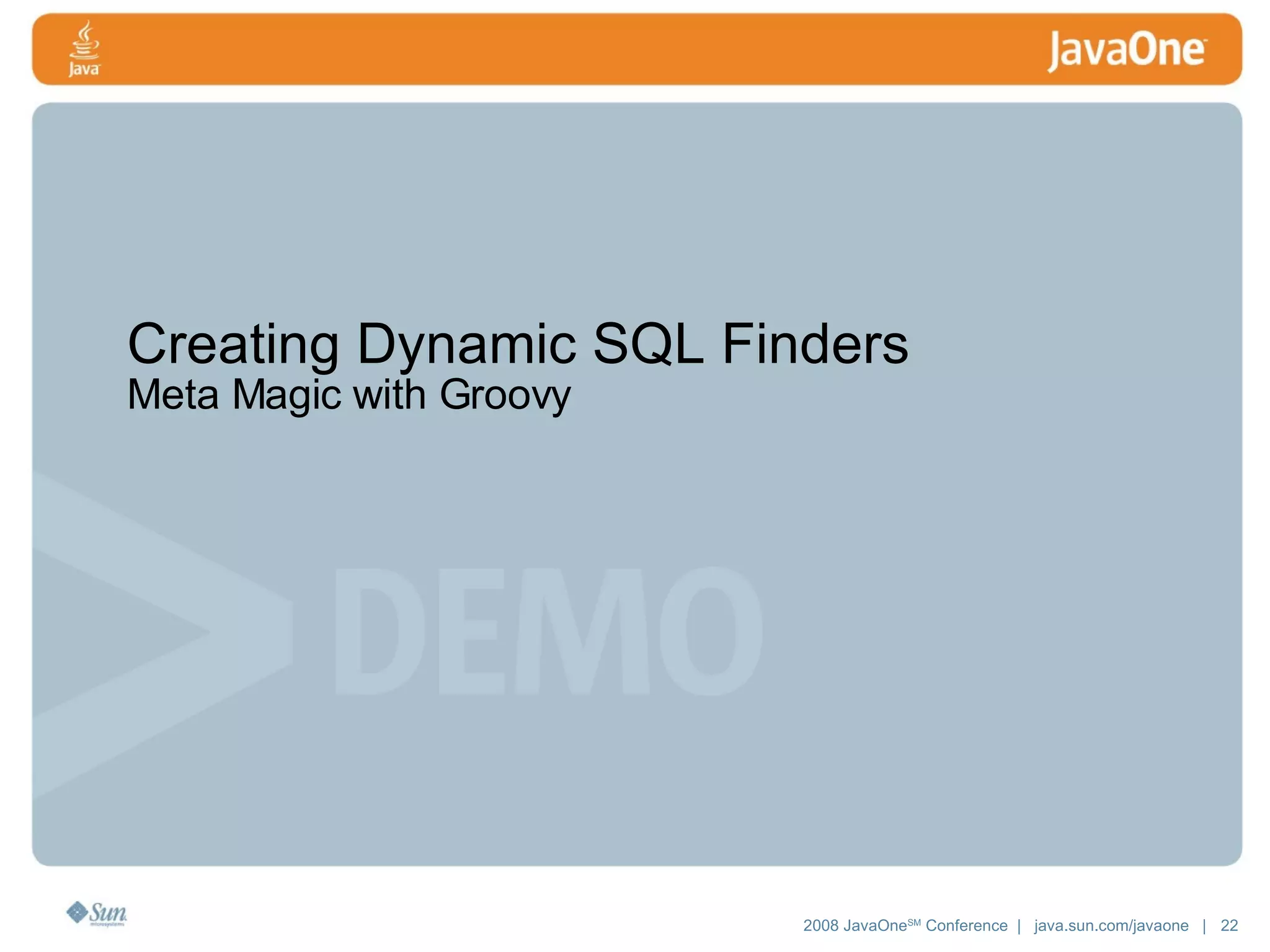
![Dynamic SQL Finders Example Book.metaClass. static . methodMissing = { String name, args -> if (name.startsWith("findBy") && args) { def prop = name[6..-1] prop= prop[0].toLowerCase() + prop[1..-1] def callable = { Object[] varArgs -> def results = [] def sql = Sql.newInstance( url, user, pass, driver) sql.eachRow( """select * from ${Book.name} where $prop=?""" , [varArgs[0]]) { results << new Book(title:it.title, author:it.author) } return results } Book.metaClass. "$name" = callable return callable. call(args) } } Intercept Cache Invoke](https://image.slidesharecdn.com/psts57932957931911finv1-1210965156347074-8/75/JavaOne-2008-TS-5793-Groovy-and-Grails-changing-the-landscape-of-Java-EE-patterns-23-2048.jpg)
![Real Life Example: GORM in Grails class Album { String title String artist Date releaseDate static hasMany = [songs:Song] } class Song { String title Double duration } table - album table - song GORM classes, also known as domain classes, go in the domain directory id title artist release_date id title duration album_id](https://image.slidesharecdn.com/psts57932957931911finv1-1210965156347074-8/75/JavaOne-2008-TS-5793-Groovy-and-Grails-changing-the-landscape-of-Java-EE-patterns-24-2048.jpg)
